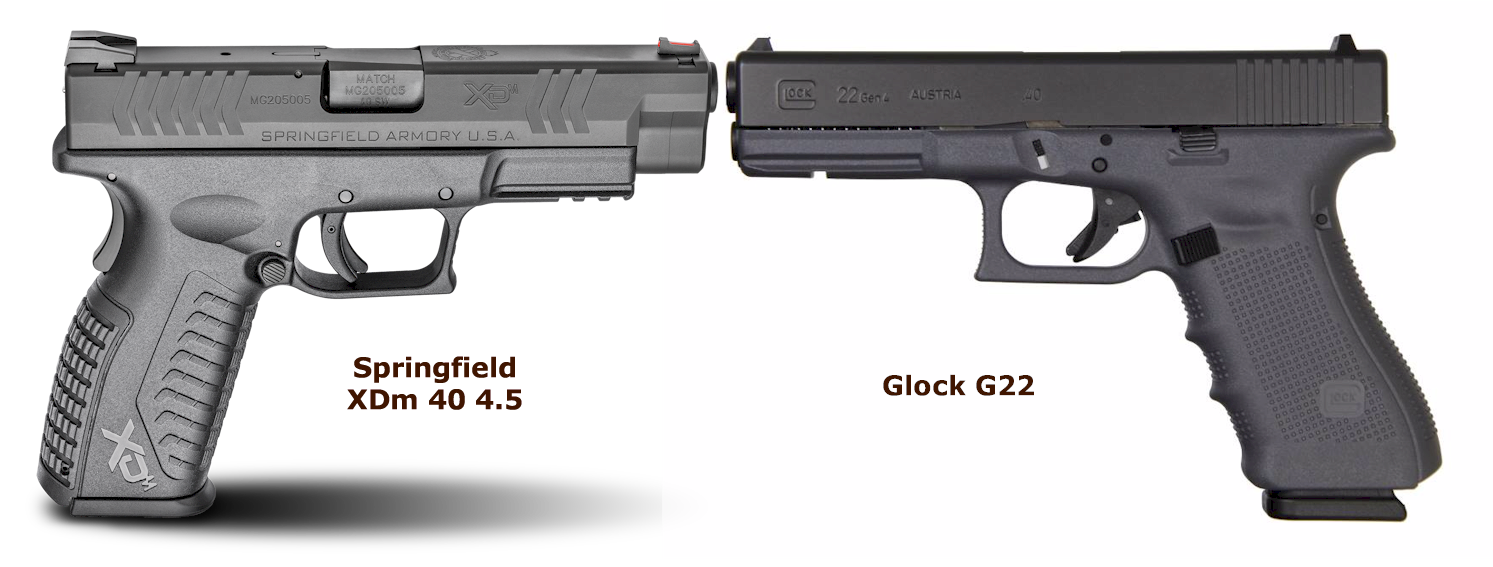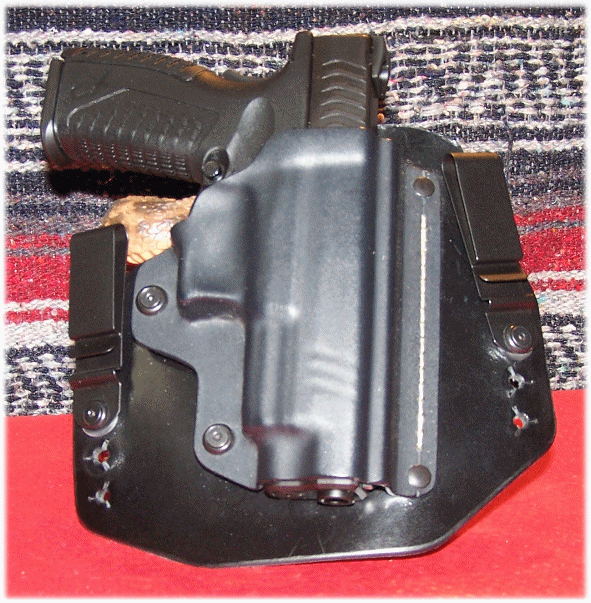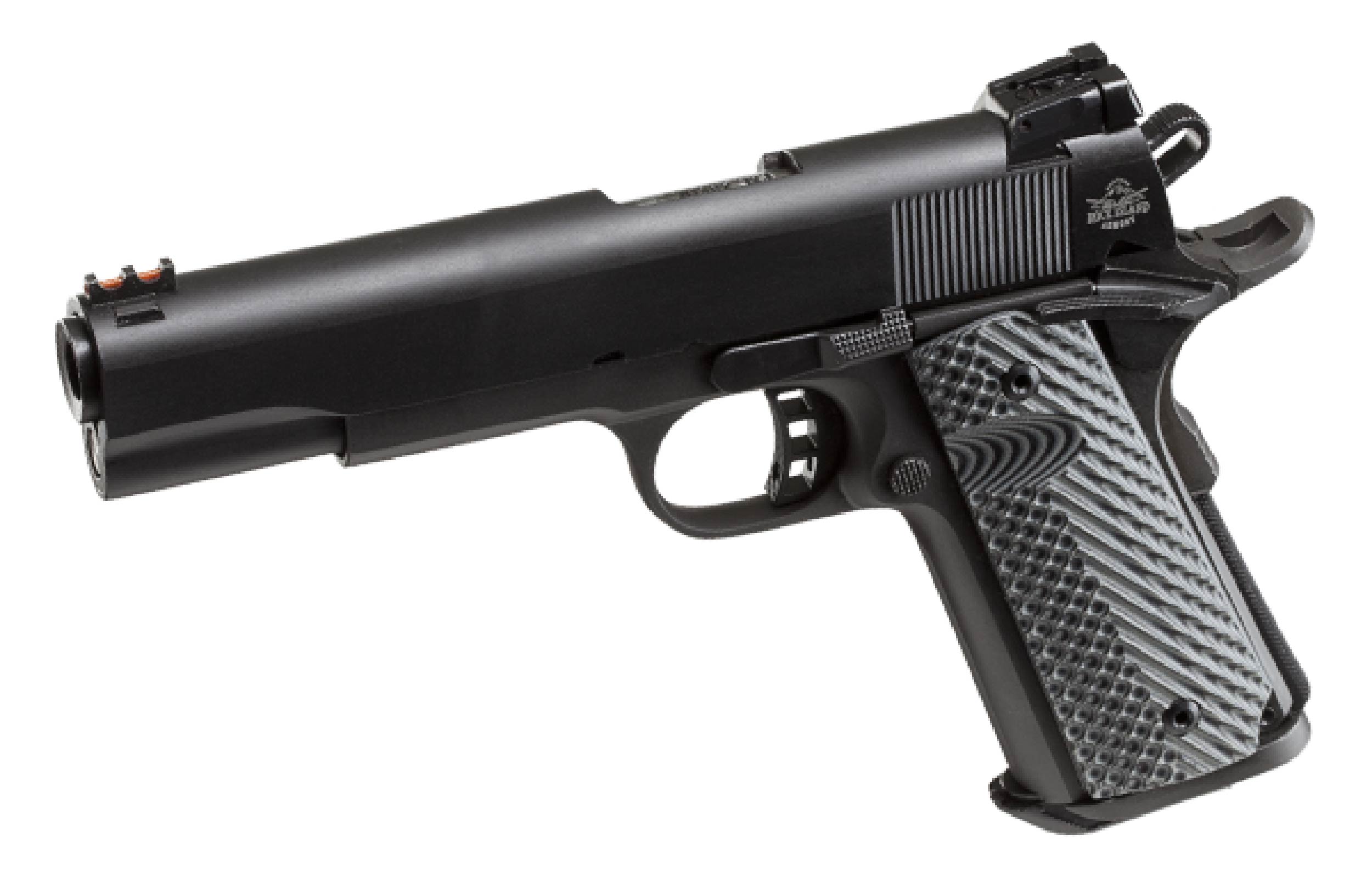 In my recent excursion into the .40 Smith & Wesson cartridge, I had to consider the platform from which it was to be fired. Luckily, my local gun club and range has a somewhat large collection of .40 Smith & Wesson pistols, which included the Glock G22 and the XD 40.4.5 and these were narrowed down to the two finalist. The Springfield XDm was the final decision, as I have the XDm 4.5 in both 9mm and .45ACP calibers, and the XDm 40 4.5 would fill the gap in between them.
In my recent excursion into the .40 Smith & Wesson cartridge, I had to consider the platform from which it was to be fired. Luckily, my local gun club and range has a somewhat large collection of .40 Smith & Wesson pistols, which included the Glock G22 and the XD 40.4.5 and these were narrowed down to the two finalist. The Springfield XDm was the final decision, as I have the XDm 4.5 in both 9mm and .45ACP calibers, and the XDm 40 4.5 would fill the gap in between them.
Range day came for breaking in the Springfield XDm 40 4.5. Not that I wanted to do a side by side comparison, but the Glock G22 is the counterpart to the Springfield XDm 40 4.5, the occasion presented itself, and I thought that I would take advantage of it. I am certain that others have also compared the two, but this is simply my impression of both pistols.
First of all, and before you Glock guys feel the hair rising on the back of your necks, let me say that the Glock G22 is an excellent pistol, but it lacks certain things that I prefer in a handgun. That’s not saying that they are bad or good, because they are simply my preferences (or likes).
I like the outward appearance of the G22. It is very clean looking as compared to the Springfield XDm line of pistols. The grip of the G22 is very conservative in stippling and it has finger groves that I find fits my hand. The look of the G22 is much more streamlined than with the Springfield and I like that the rail is minimal. The texturing of the Springfield is, obviously, more pronounced than the G22. Some have said that the texturing is too much on the Springfield, but I have no complaint; the texturing hits my hand in all of the right places.
The slide height of the Springfield is greater than that on the G22, and one would think that muzzle flip would be an issue. However, that is not the case as I will explain later.
The sights on both pistols are adequate. For me, I found that the sights on the Glock (front dot against a rear rectangle) was more than enough and easy to see with my old eyes. The Glock G22 range pistol that I used for comparison; however, had a green fiber optic dot rear sight. While they are probably effective in sunlight, indoor range lighting did not add any enhancement to them at all. The rear sight of the Springfield XDm 40.4.5 has two rear dots that contrast against the front red fiber optic sight. Again, the fiber front sight is very usable in sunlight, but indoor range lighting did not offer any advantage in using them.
The grip angle is obviously different between the two pistols. The grip of the Springfield XDm 40 4.5 just felt more natural to me, and it came with the medium grip adapter installed. Although the ‘beavertail’ of the XDm is more pronounced than with the G22, I had no issues with the G22. I have had, on occasion, a slight ‘slide bite’ with the Glock G19, bit not so with the G22. It may be that the grip length on the G22, as compared to that on the G23 or G19, has more surface area for the hand and I don’t feel the propensity to get as much as my hand as high as possible on the grip. Of the two grips; however, the Springfield XDm is preferred by me.
Some say that the beaver-tail (or grip) safety is overkill on the Springfield XDm and not needed, but I have never had an issue with it. In fact, I don’t even notice it until I have to disassemble the pistol and must ensure that the grip safety is pressed in order to retract the slide. I also like the fact that there is a measure of safety added when holstering the firearm; if the grip safety is not pressed and if something gets into the trigger guard, the pistol is not going to shoot. Normally, with any semi-automatic pistol, my thumb is against the rear of the slide and my hand is not on the rear of the grip when I holster the pistol. Years of operating the 1911-based pistol has ingrained certain things. Again, to me the grip safety is a non-issue.
As noted, the texturing of the frame of the Springfield XDm 40 4.5 is somewhat aggressive but not aggressive enough to warrant moving to a shooting glove during a long range session.
The slide of the Springfield XDm 40 4.5 is also much more textured than that of the G22. As with the grip, this is a non issue for me. In fact, I find the rear serrations very helpful when pulling the slide rearward for ‘over hand’ chambering of a cartridge. ‘Over Hand’ chambering is something that I am not used to doing. With a 1911-based pistol, I normally just push the slide lock lever down and let the pistol chamber itself. For some reason, I felt comfortable with the ‘sling shot’ method on the Glock G22 and the Springfield XDm 40 4.5. As the pistol breaks in, and tension on the slide lock lever decreases, I may revert back to my old ways.
One of the features that I like about the Springfield line over the Glock pistols is the location of the trigger pins. The trigger and recoil block pins are low on the frame of the Springfield; whereas the recoil block pin is high on the frame of the G22. It is at this point that I have seen several frame cracks on the Glock. The Springfield seems to have more material than the Glock to surround the recoil block pin.
The triggers on the two firearms are, of course, different. I have no qualms with either of them. The Springfield trigger has some take-up after the trigger lever is pressed (some call it mushy) and just before the trigger breaks. However, the trigger break is crisp. With that said, the trigger on the Springfield suits my style of shooting better than with the Glock, but I can work with either trigger.
The Springfield XDm 40 4.5 comes with a single, non-captivated recoil spring that resides on a steel recoil spring guide. With this type of arrangement, changing out the recoil spring is very simple and not unlike the 1911-based pistol. The G22, on the other hand, has dual recoil springs that are part of a reinforced polymer guide rod. It is not recommended (by Glock) to replace the ‘plastic’ guide rod with a steel guide rod, as damage to the frame could occur. With that said, the recoil assembly of the Glock can be as easily exchanged as the single recoil spring of the Springfield.
In my hand, the grip width of both the Springfield and the G22 felt about the same, and also felt the same as the grip of a 1911-based pistol. The major difference is in the length of the grip, both of which are much longer than that of a 1911-based pistol. That; however, is not necessarily a bad thing. When you are trying to e4ffectively conceal a large pistol (or even a small pistol), the butt of the pistol is of a concern, as it is most likely the one component that will cause the pistol to print against an outer garment.
The grip of the Springfield has a long arch to it as compared to the Glock. The long arch of the Springfield begins at the middle of the thumb area, the thickest part of the thumb; whereas, the arch of the Glock starts at the base of the thumb where the thumb area is less. For my hands, the arch of the Springfield is the better of the two.
The barrel lengths of the Springfield XDm 40 4.5 and the Glock G22 are nearly identical with only 0.10-inch difference between the two. The difference between the two barrels; however, is in the support of the cartridge. The Springfield has a fully-supported chamber that surrounds the entire rim of the cartridge case at the base. The Glock G22 (in fact, all Glock pistols) do not fully support the base of the cartridge, and this has been noted as the cause of ‘ka-booms’ with Glock pistols. It is common, even with 9mm cartridge cases that have been fired through a Glock pistol, to see a slight bulge at the lower part of the case where the case is not supported. Regardless of the hexagonal rifling of the Glock barrel, which is supposed to add to accuracy, I prefer my cartridges to be fully supported – especially with a high-pressure cartridge like the 9mm, .40 S&W, and 10mm. For this reason, I have to go with the Springfield.
Trigger pull length is about the same for both pistols, 0.5-inch. Trigger reset is quick on both pistols and does not constitute a subject for debate.
Magazine capacity for the Glock G22 is 15 cartridges; whereas, the Springfield XDm 40 4.5 holds an additional cartridge for a total of 16. While I have been a proponent of the “If I can’t get it done with 8, well…” crowd, I have to say that sixteen rounds of 180-grain Federal Hydra-Shok is not a bad thing. With that said, both pistols exhibited excellent accuracy with 180-grain fodder. It also can be said that both pistols functioned flawlessly with this ammunition, as they did with Sig-Sauer V-Crown 180-grain JHP. As a side note, the Federal Hydra-Shok had a smidgen more punch than the Sig Sauer load. The Federal 180-grain Hydra-Shok is now my preferred .40 Smith & Wesson EDC cartridge.
Magazine ejection can be performed from both sides of the house. The magazine release button was stiff at first, but a shot of Ballistol in all the right places made it perform smooth as silk. The round magazine button can be easily pressed with forefinger or thumb.
On a somewhat last note, let’s talk about felt recoil and muzzle flip. The Springfield XDm 40 4.5 seemed to handle the recoil of the 180-grain .40 S&W cartridge better than the Glock G22. And, this is just not my opinion, but also the opinion of my shooting companion who shot both pistols for comparison. The felt recoil of the cartridge felt milder with the XDm. The muzzle rise was not quite as much with the XDm as it was with the Glock G22. The G22 only weighs slightly less than the XDm (25.59 oz. [empty] vs. 30 oz. [empty]). The G22’s overall length is 8.03-inches vs. the 7.6-inch overall length of the XDm. The overall height of the G22 is 5.43-inches vs. the XDm’s 5.75-inch height. The grip width of both pistols is the same at 1.18-inches. With the dimensions of both pistols nearly the same, the only contributing factors that I can come up with is the construction of each pistol and the grip frame itself. The felt recoil of the G22 seemed to be more upward than rearward; whereas, the felt recoil of the XDm seemed to be more rearward into the hand. I really don’t have a final answer, but can only surmise at this point.
The Springfield XDm 40 4.5 is favored over the Glock G22. Not just because I bought the Springfield XDm 40 4.5, but of the results found. If the Glock G22 was the favored pistol, I would admit to that fact.
THE CONCEALMENT FACTOR
The fact remains that the Springfield XDm 40 4.5 and the Glock G22 are full-sized ‘service’ pistols. As such, both add a degree of complexity when trying to conceal them – but it can be done with the right holster and clothing combination.

XDm 9mm 4.5 in Black Arch Holster Adjusted to my Preferences for IWB Carry.
My IWB holster for the Springfield XDm 40 4.5 is the same as I use for the Springfield XDm 9 4.5, a product of SHTF Gear (now known as Black Arch Holsters) that is no longer manufactured (unfortunately). The holster has been modified to my liking; the sweat guard has been removed, the depth has been adjusted to have the pistol sit as low as possible in the trousers, and the forward cant of the holster has been changed to allow as much grip as possible to press into the body (greater than the usual 15-degree) cant. That’s not to say that that printing when bending over is non-existent, but I can say that has been mitigated as much as possible. With this, my outer clothing is as loose as possible and my belt as tight as possible. I also wear suspenders to help support the load. Hopefully, I have all the “possibles” covered.
SUMMARY
The .40 S&W cartridge has finally captured my attention, and I consider the Springfield XDm 40 4.5 an excellent platform from which to shoot it. It is my opinion that the .40 S&W cartridge is best suited to full-size pistols to maximize velocity, minimize felt recoil, and increase accuracy – but then most calibers are. I have to say, though, my interest is peaked in firing this cartridge through the Rock Island Armory 1911 FS Ultra 40 (shown below). But, that’s another story and I am making plans for that.

RESOURCES
Springfield XDm 40 4.5: https://www.springfield-armory.com/products/xdm-4-5-40-cal/
Glock G22: https://us.glock.com/products/model/g22
![]()

